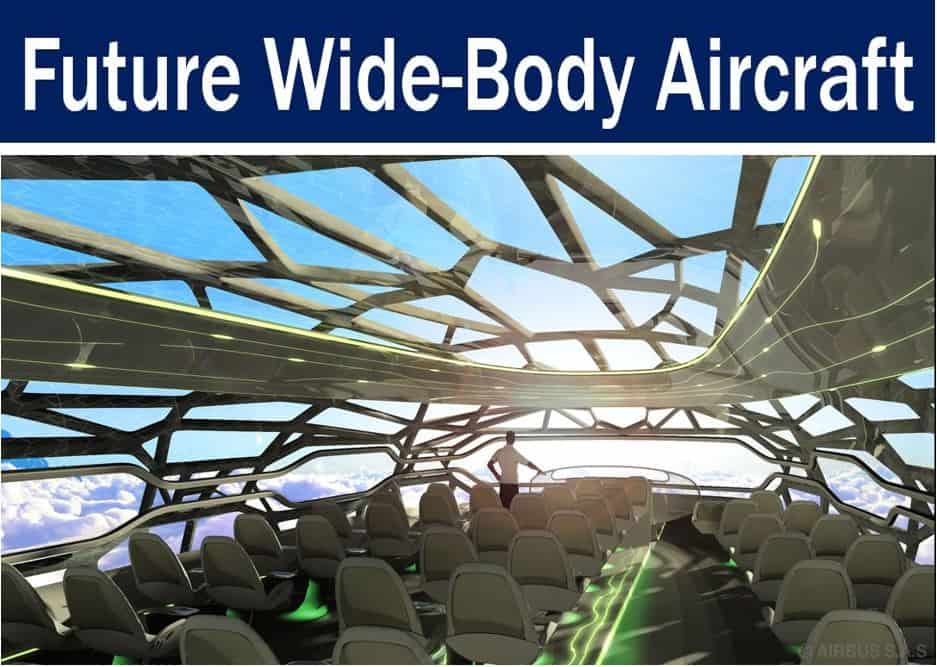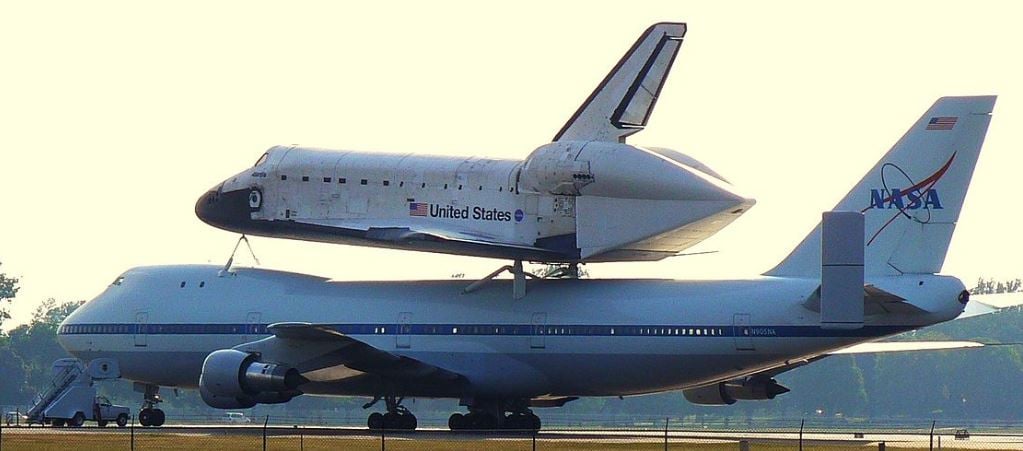Wide-body aircraft – definition and meaning
A Wide-Body Aircraft is a passenger airplane – a jetliner – whose fuselage is wide enough to accommodate two passenger aisles, i.e. a twin-aisle aircraft. A wide-body aircraft has at least seven seats across. It contrasts with a narrow-body aircraft, which only has one aisle – a single-aisle aircraft – and no more than six seats abreast (across).
The advent of wide-body aircraft marked a pivotal moment in commercial aviation, allowing for a dramatic increase in passenger capacity and fostering the growth of international travel.
You can write the term with or without a hyphen – either ‘widebody aircraft’ or ‘wide-body aircraft’.
Below are some examples of wide-body aircraft:
- Airbus: A300, A310, A330, A340, A350, and A380.
- Boeing: 747, 767, 777, and 787 Dreamliner.
- McDonnell Douglas: DC10 and MD11.
- Ilyushin: Il-96 and Il-96.
- Lockheed: 1011.

Regarding wide-body aircraft, GlobalSecurity.org writes:
“Four families of aircraft made up the fleet of wide-body transports that began operation on airlines throughout the world in the 1970’s.”
“These aircraft are the Boeing 747, the McDonnell Douglas DC-10, and the Lockheed L-1011, which were manufactured in the United States, and the Airbus A-300, produced by a consortium of European countries. All were expected to continue in service for the foreseeable future.”
“In addition to these aircraft, the Soviet Union developed a large four-engine wide-body transport. This aircraft, the Ilyushin 86, first flew on December 22, 1976, and airline operations began in 1980. China is a late entrant to this market, with a COMAC C929 possibly flying after 2020.”
Why do we have wide-body aircraft?
The term ‘wide-body’ is derived from the interior arrangement of the aircraft’s passenger cabin.
With single-aisle airplanes, such as the Boeing 727 or 707, the cabin is divided into a small first-class compartment, with four seats abreast, plus a large economy-class cabin with six seats abreast. Just one aisle runs the whole length of the cabin, with three seats either side.
The introduction of wide-body aircraft revolutionized air travel by providing enhanced passenger comfort and significantly improving airlines’ operational efficiency on long-haul flights
For aircraft that can carry more passengers, the fuselage of the narrow-body type would be too long for practical purposes. The landing gear would need to be very long and heavy in order to prevent the rear end from scraping on the runway during take-off.

With an extremely long aisle, it would take too long for all the passengers to board and disembark, while the cabin attendants would have difficulties in serving meals and drinks.
In a wide-body aircraft, the first class section consists of a small compartment, four seats abreast, in the front section of the fuselage, and a large tourist cabin with at least seven seats abreast.
The wide-body aircraft’s tourist cabin is typically divided into two aisles that run the entire length of the cabin. Some wide-body aircraft can accommodate up to 10 seats abreast.
For large-capacity jetliners, having two aisles means passengers can board and disembark safely and rapidly, while cabin crew members can serve food and drinks more easily.
The wide-body twin-aisle design also offers passengers slightly wider seats and a feeling of being in a more spacious cabin. The landing gear is not long and heavy.

Wide-body aircraft – the interior
The interior of an aircraft – where the passengers and crew are – is called the cabin. Ever since the first passenger planes, the cabin has been undergoing a continuous evolution. There are between one and four classes of travel currently available on wide-body aircraft.
In most cases, the bar and lounge areas, which everybody thought would become a common flying feature when wide-body aircraft entered the scene in the 1970s, have mostly gone.
However, a few airlines have re-introduced a bar and lounge area in their first class or business class, especially those using the Airbus A380 and 340-600, and the Boeing 777-300ER.
First-class passengers on the Emirates’ A380 can have a shower during the flight. It operates for a maximum of five continuous minutes.
The size and seat pitch of airline seats vary considerably and depend on how the company configures the interior of the airplane. For example, short-haul flights tend to have a higher seating density than long-haul flights.
Since the turn of the century, the airline industry has become progressively more competitive. It is highly likely that seating densities in the tourist class cabin will continue to increase.
In the Boeing 777, a single-deck wide-body aircraft, there is an extra space above the cabin, which is currently used as a galley storage and crew rest area.
Video – What is a Wide-Body Aircraft?
This interesting video, from our sister channel on YouTube – Marketing Business Network, explains what a ‘Wide Body Aircraft’ is using simple and easy-to-understand language and examples.

